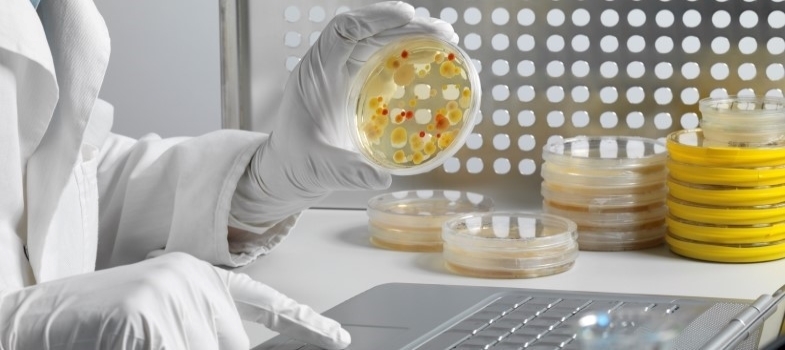5.3 Choosing pathogens to isolate
There are hundreds of pathogens that could be potentially isolated and tested for antimicrobial susceptibility. The most important livestock animal pathogens in relation to AMR are commonly split into two categories:
Commensal bacteria , such as Escherichia coli, Enterococcus faecium and E. faecalis are carried by all animals and commonly isolated from animal intestinal contents and faeces. Commensal bacteria are exposed to antimicrobials administered through food and water, and may be a reservoir for transferable resistance.- Food-borne
zoonotic bacteria such as Salmonella spp. and Campylobacter spp. occur in animals and cause food-borne infections in humans. For aquaculture, the World Organisation for Animal Health’s (OIE’s) Aquatic Animal Health Code suggests three pathogenic bacteria species capable of causing disease in humans (i.e. zoonotic), that should be isolated as a minimum. Individual countries or regions may choose their own list of priority pathogens to isolate from animals and test for antimicrobial resistance. This may include sampling for pathogens that only cause disease in animals, given the importance of these diseases to animal health and trade. In the interest of harmonisation, the OIE has released a list of priority pathogens (Table 1).
| Type of animals | Bacteria category | Priority pathogens |
|---|---|---|
| Livestock | Commensals | E. coli, E. faecium, E. faecalis |
| Zoonotic bacteria | Salmonella spp. and Campylobacter spp. and other bacteria that may be pathogenic to humans such as methicillin-resistant Staphylococcus aureus (MRSA) and Listeria monocytogenes | |
| Aquaculture | Pathogens | Salmonella spp., Vibrio parahaemolyticus and Listeria monocytogenes |
5.2 Choosing animals to sample for AMR



